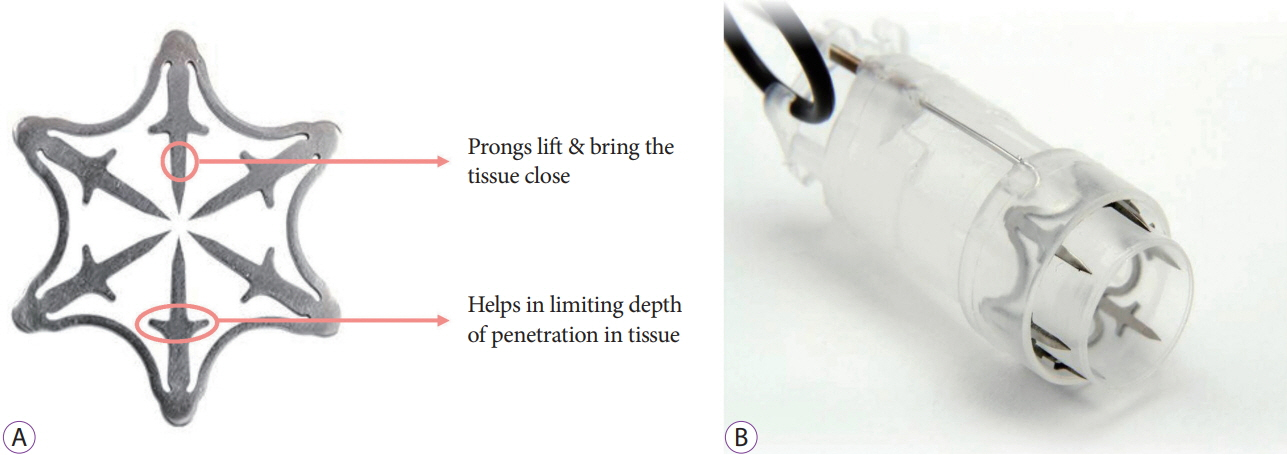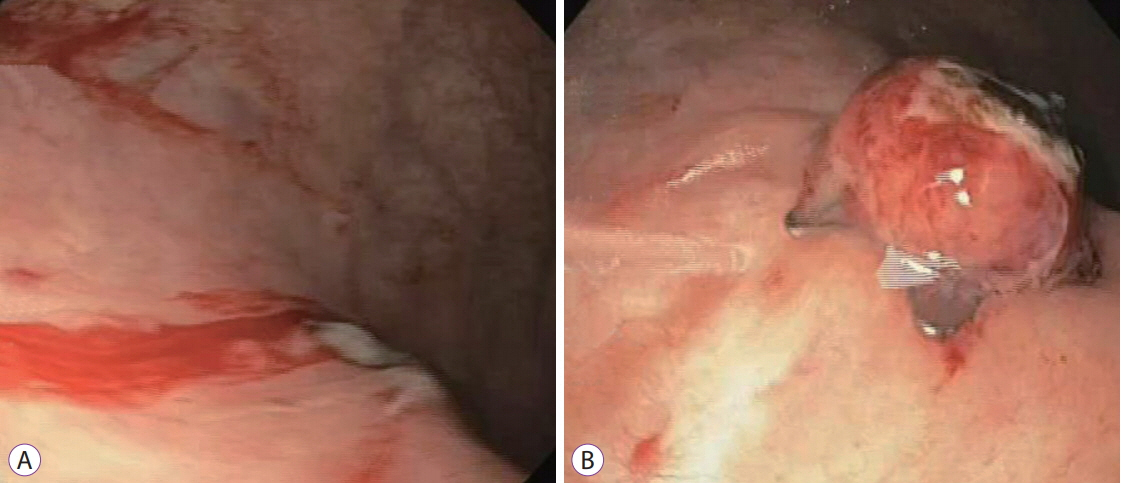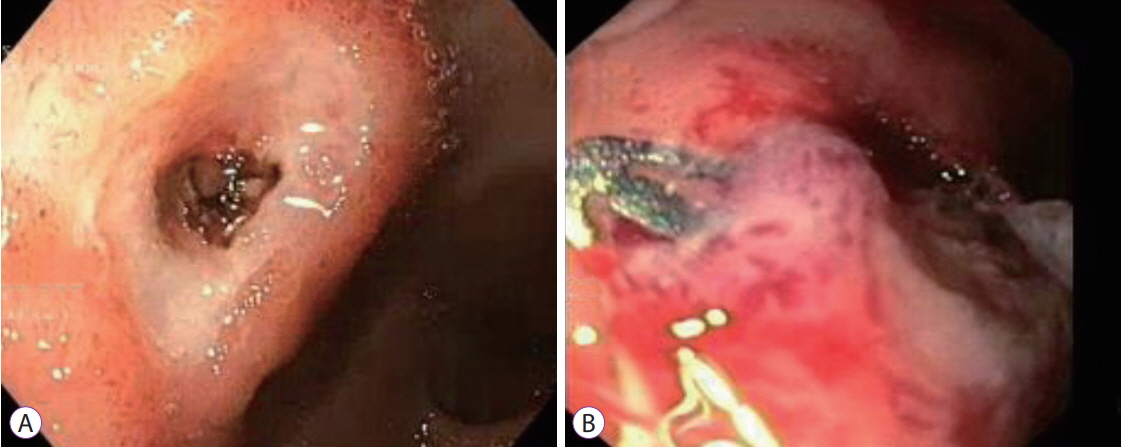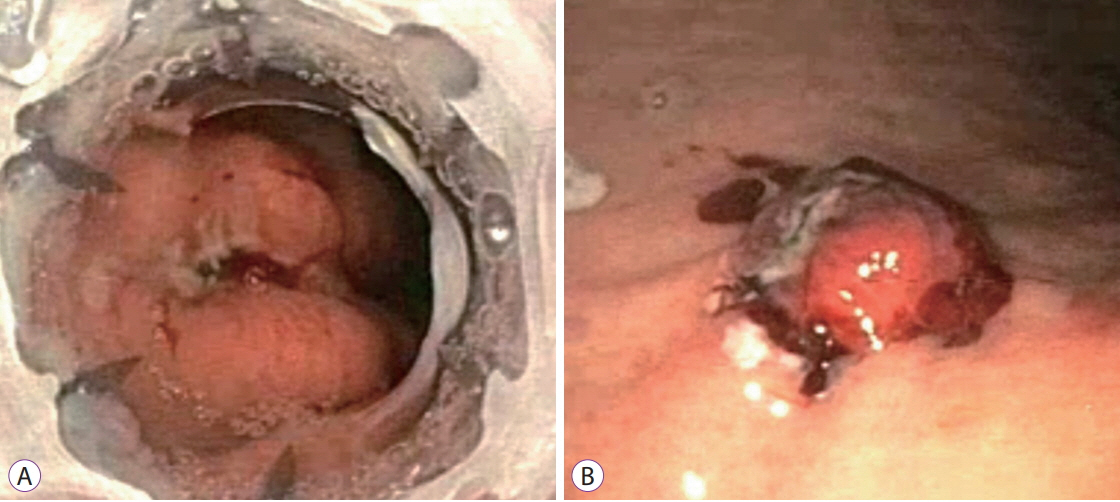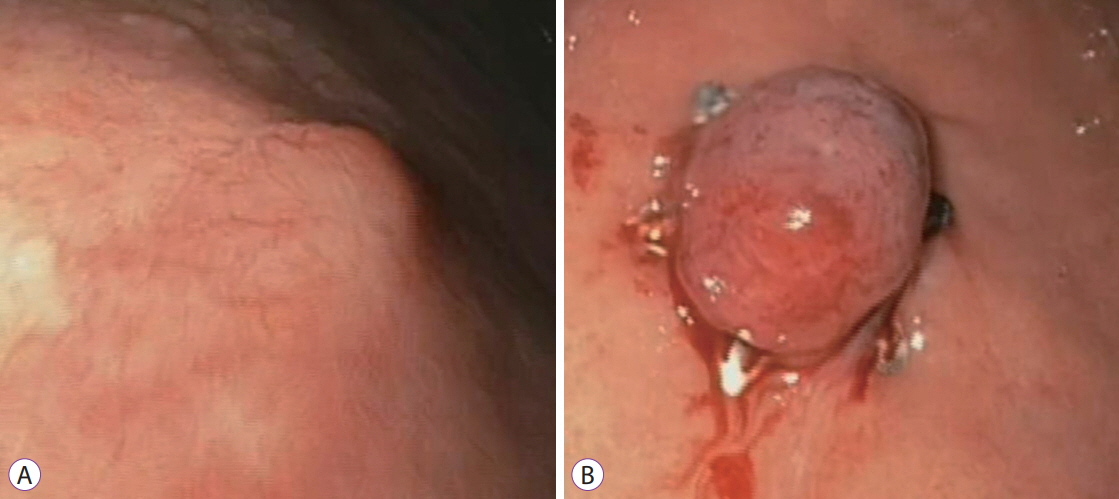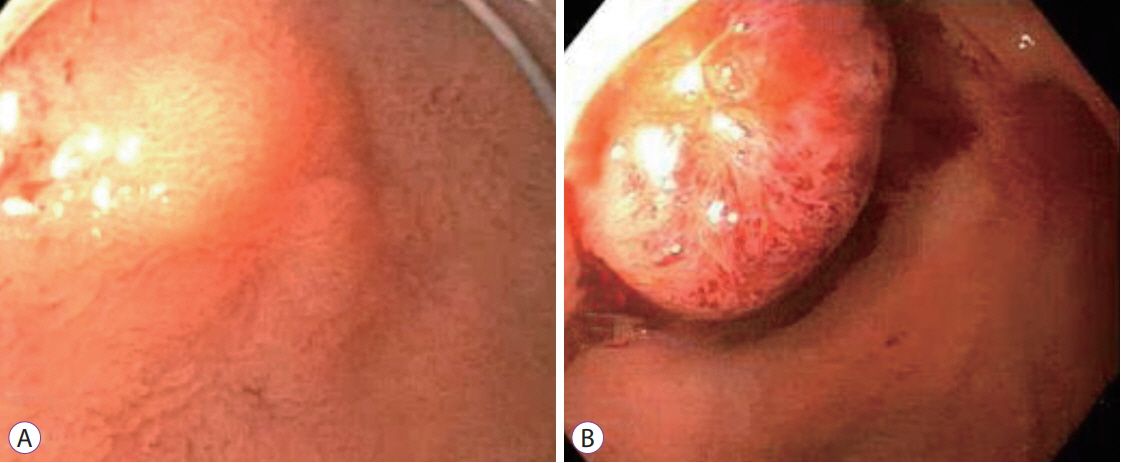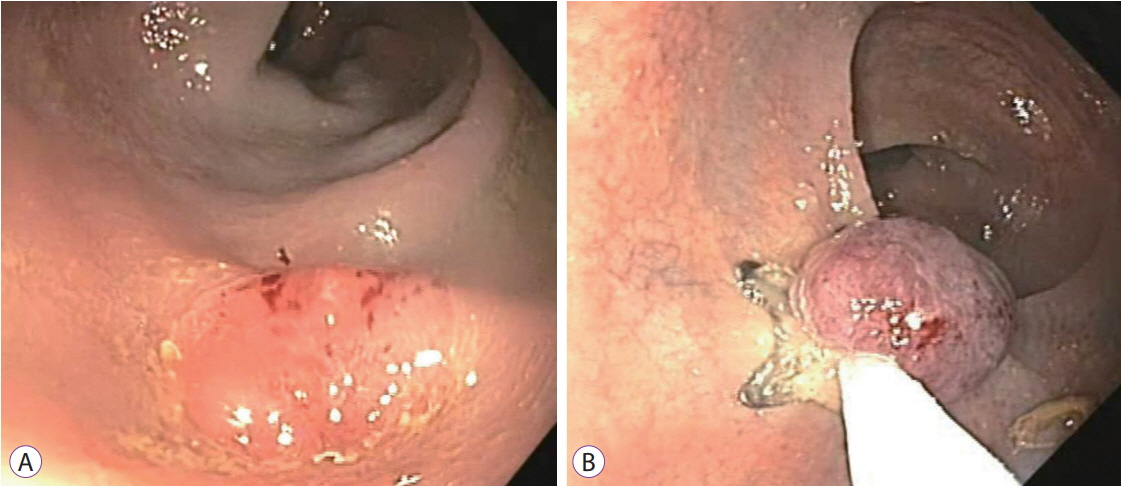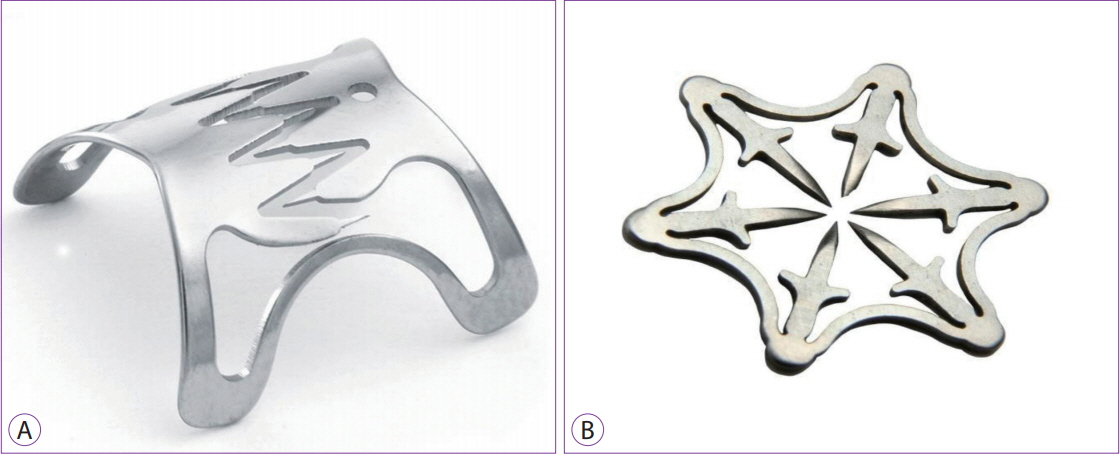Clin Endosc.
2019 Nov;52(6):574-580. 10.5946/ce.2019.122.
Endoscopic Management with a Novel Over-The-Scope Padlock Clip System
- Affiliations
-
- 1Institute of Gastrosciences and Liver, Apollo Gleneagles Hospital, Kolkata, India. mkgkolkata@gmail.com
- KMID: 2465800
- DOI: http://doi.org/10.5946/ce.2019.122
Abstract
- BACKGROUND/AIMS
The Padlock clip is a recently introduced over-the-scope clip (OTSC) that requires the use of an alternate technique and has a different design from previous OTSCs. However, data regarding its clinical use are limited. The aim of this study is to present our clinical experience using this novel Padlock clip system.
METHODS
Between September 2018 and June 2019, 7 consecutive patients underwent Padlock clip application at our center by an experienced endoscopist. A Padlock clip was used for achieving hemostasis in 4 patients presenting with gastrointestinal (GI) bleeding, as well as for endoscopic full-thickness resection in the remaining 3 patients.
RESULTS
All 7 patients achieved technical as well as clinical success, with absence of complications or rebleeding, during a follow-up of a minimum of 3 weeks. All patients were hospitalized post procedure for a minimum of 48 hours, and an absence of adverse events was noted in our patient population throughout the procedure and post-procedure period. Antiplatelet therapy was reinstated shortly after the application of the Padlock clip, with no GI bleeding observed.
CONCLUSIONS
The Padlock clip is a novel OTSC, with benefits that include safe, simple, and rapid deployment. Antiplatelet therapy may be reinstated for patients, when necessary, shortly after applying the Padlock clip due to full-thickness closure of the tissue.
Keyword
Figure
Cited by 1 articles
-
Editors' Choice of Noteworthy Clinical Endoscopy Publications in the First Decade
Gwang Ha Kim, Kwang An Kwon, Do Hyun Park, Jimin Han
Clin Endosc. 2021;54(5):633-640. doi: 10.5946/ce.2021.216.
Reference
-
1. Haito-Chavez Y, Law JK, Kratt T, et al. International multicenter experience with an over-the-scope clipping device for endoscopic management of GI defects (with video). Gastrointest Endosc. 2014; 80:610–622.
Article2. Manta R, Galloro G, Mangiavillano B, et al. Over-the-scope clip (OTSC) represents an effective endoscopic treatment for acute GI bleeding after failure of conventional techniques. Surg Endosc. 2013; 27:3162–3164.
Article3. Fahndrich M, Sandmann M. Endoscopic full-thickness resection for gastrointestinal lesions using the over-the-scope clip system: a case series. Endoscopy. 2015; 47:76–79.
Article4. Dinelli M, Omazzi B, Andreozzi P, Zucchini N, Redaelli A, Manes G. First clinical experiences with a novel endoscopic over-the-scope clip system. Endosc Int Open. 2017; 5:E151–E156.
Article5. Goenka MK, Rai VK, Goenka U, Tiwary IK. Endoscopic management of gastrointestinal leaks and bleeding with the over-the-scope clip: a prospective study. Clin Endosc. 2017; 50:58–63.
Article6. Chan SM, Chiu PW, Teoh AY, Lau JY. Use of the over-the-scope clip for treatment of refractory upper gastrointestinal bleeding: a case series. Endoscopy. 2014; 46:428–431.
Article7. Armellini E, Crinò SF, Orsello M, et al. Novel endoscopic over-the-scope clip system. World J Gastroenterol. 2015; 21:13587–13592.
Article8. Lamberts R, Koch A, Binner C, et al. Use of over-the-scope clips (OTSC) for hemostasis in gastrointestinal bleeding in patients under antithrombotic therapy. Endosc Int Open. 2017; 5:E324–E330.
Article9. Manta R, Mangiafico S, Zullo A, et al. First-line endoscopic treatment with over-the-scope clips in patients with either upper or lower gastrointestinal bleeding: a multicenter study. Endosc Int Open. 2018; 6:E1317–E1321.
Article10. Shiba M, Higuchi K, Kadouchi K, et al. Risk factors for bleeding after endoscopic mucosal resection. World J Gastroenterol. 2005; 11:7335–7339.
Article11. Prosst RL, Kratt T. A randomized comparative trial of OTSC and Padlock for upper GI hemostasis in a standardized experimental setting. Minim Invasive Ther Allied Technol. 2017; 26:65–70.
Article12. Al-Bawardy B, Rajan E, Wong Kee Song LM. Over-the-scope clip-assisted endoscopic full-thickness resection of epithelial and subepithelial GI lesions. Gastrointest Endosc. 2017; 85:1087–1092.
Article
- Full Text Links
- Actions
-
Cited
- CITED
-
- Close
- Share
- Similar articles
-
- Endoscopic hemostasis using an over-the-scope clip for massive bleeding after percutaneous endoscopic gastrostomy removal: a case report
- Over-the-Scope Clip in the Treatment of Gastrointestinal Leaks and Perforations
- Endoscopic Management of Gastrointestinal Leaks and Bleeding with the Over-the-Scope Clip: A Prospective Study
- Endoscopic Treatment of Various Gastrointestinal Tract Defects with an Over-the-Scope Clip: Case Series from a Tertiary Referral Hospital
- Successful Closure of a Benign Refractory Tracheoesophageal Fistula Using an Over-the-Scope Clip after Failed Esophageal Stent Placement and Surgical Management

